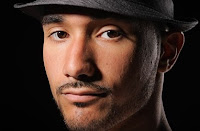Monday, 13 May 2013
Friday, 10 May 2013
Friday, 3 May 2013
Evaluation + Prezi
This is a link to the Prezi I created which talks more in depth about the technologies I used.
http://prezi.com/8xztx7di-386/untitled-prezi/?kw=view-8xztx7di-386&rc=ref-2184435
Thursday, 2 May 2013
Wednesday, 1 May 2013
Lighting Research
Lighting is important in photography as there are a lot of different types and they can completely change the outcome of the image so if you use the wrong type of lighting you will not get the image that you want and it can make photos look unprofessional.
Front Lighting
This is the type of lighting that is the same as the type of lighting that is created by a flash going off on a camera as an image is taken. It is mainly used on close up shots and makes the object closest to the camera very bright and makes the background dark if there is little to no lighting anywhere else or if the front lighting is bright enough.
Back Lighting
This creates the opposite effect to front lighting as it lights up the background and makes the object closest to the camera very dark and almost completely black and silhouette-like. This type of lighting is not used on magazines very often, if at all, as it defeats the object of having a model on the cover unless it is a photography/landscape magazine which does not focus on models.
Studio Lighting
This is the generic and most common lighting used to take professional images. This is used 9/10 times for magazine front cover images as it shows up every part of the subject. It is usually achieved by using light/soft boxes/umbrellas to soften the flash which makes the image natural and less harsh but it can also be made to make the images harsh, sharp and very bright.
Soft Lighting
This is almost the same as studio lighting except this is only used to make images look natural and as if the only lighting on the subject was natural daylight. It is usually thought that this is created just by one light source but it is actually created by many light sources such as soft boxes all around the subject (and a few more around the area of the subject that you want to be more lit up than the rest).
Hard Lighting
This is the opposite to soft lighting which means it does not look like natural light. The light creates harsh edges making the images look very sharp and shows up imperfections, this is why it is not used on magazine front covers very often as it does not flatter a person.
Diagram Of Lighting Set Ups
This is a diagram of a typical portrait set up.
The type of lighting I plan to use when shooting my images for my magazine is studio lighting and also front lighting in a couple of the images just to create effect and add a bit of diversity to my images.
The following video teaches you how to set up studio lighting and shows you the difference studio lighting can make to images.
Front Lighting
This is the type of lighting that is the same as the type of lighting that is created by a flash going off on a camera as an image is taken. It is mainly used on close up shots and makes the object closest to the camera very bright and makes the background dark if there is little to no lighting anywhere else or if the front lighting is bright enough.
Back Lighting
This creates the opposite effect to front lighting as it lights up the background and makes the object closest to the camera very dark and almost completely black and silhouette-like. This type of lighting is not used on magazines very often, if at all, as it defeats the object of having a model on the cover unless it is a photography/landscape magazine which does not focus on models.
Studio Lighting
This is the generic and most common lighting used to take professional images. This is used 9/10 times for magazine front cover images as it shows up every part of the subject. It is usually achieved by using light/soft boxes/umbrellas to soften the flash which makes the image natural and less harsh but it can also be made to make the images harsh, sharp and very bright.
Soft Lighting
This is almost the same as studio lighting except this is only used to make images look natural and as if the only lighting on the subject was natural daylight. It is usually thought that this is created just by one light source but it is actually created by many light sources such as soft boxes all around the subject (and a few more around the area of the subject that you want to be more lit up than the rest).
Hard Lighting
This is the opposite to soft lighting which means it does not look like natural light. The light creates harsh edges making the images look very sharp and shows up imperfections, this is why it is not used on magazine front covers very often as it does not flatter a person.
Diagram Of Lighting Set Ups
This is a diagram of a typical portrait set up.
The type of lighting I plan to use when shooting my images for my magazine is studio lighting and also front lighting in a couple of the images just to create effect and add a bit of diversity to my images.
The following video teaches you how to set up studio lighting and shows you the difference studio lighting can make to images.
Cover Construction
I started with this image and then duplicated the layer and adjusted the contrast and exposure before turning the opacity down so that it was not too harsh or obvious in order to make my model's skin look perfect.
Subscribe to:
Posts (Atom)

























